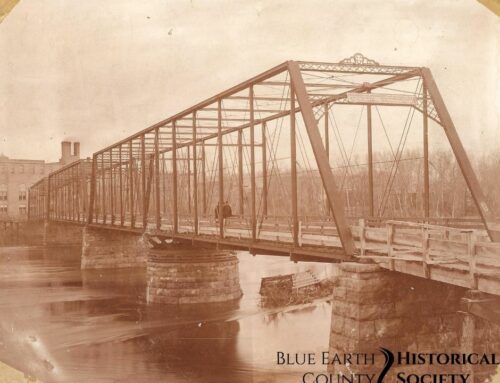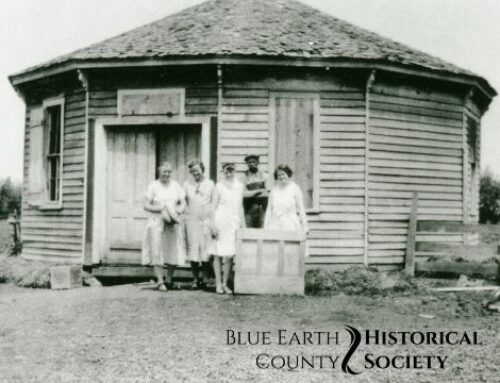Lime Township was officially established in 1858. The township was named after lime kilns, large outdoor furnaces with chimneys used to burn limestone. The name accurately conveys Lime Townships strong ties to quarrying. In fact, the township is remembered for containing the best and largest stone quarries in Blue Earth County. Its success is largely due to its situation near the malleable stone and fertile land.
In 1847 the government sent specialists to determine what kinds of plants, animals, and minerals were on the land. The first settler was James Rablin, in 1852. Years after his arrival a sawmill, post office, and railway station emerged. It was determined that this area had a strong stone industry potential. In its infancy, the stones were used only for floors and paths. Eventually, it was realized this stone held great potential. George Maxfield, first a wagon maker, became the catalyst of business in Lime. After him, others realized they too could make money from the quarries. Soon the whole township was being built off stone: sidewalks, buildings, statues, etc. If you wanted to create bricks from the stone you would use a hand drill and make holes in a line, fill them with gunpowder, and blast out the shape. It was a difficult endeavor but one the people of Lime perfected. The material from Limes quarries was very sought after. Stone was shipped near and far. The Philadelphia Museum of Art was made from Lime township stone. Likewise, the old Tourtellotte Hospital was built from the same material.
Because of the quarrying industry, Lime township was able to thrive in its climate. New technologies allowed the allocation of resources to be more efficient and safe. Lime Township has an interesting past shaped by quarrying and is well worth looking into.





Leave A Comment